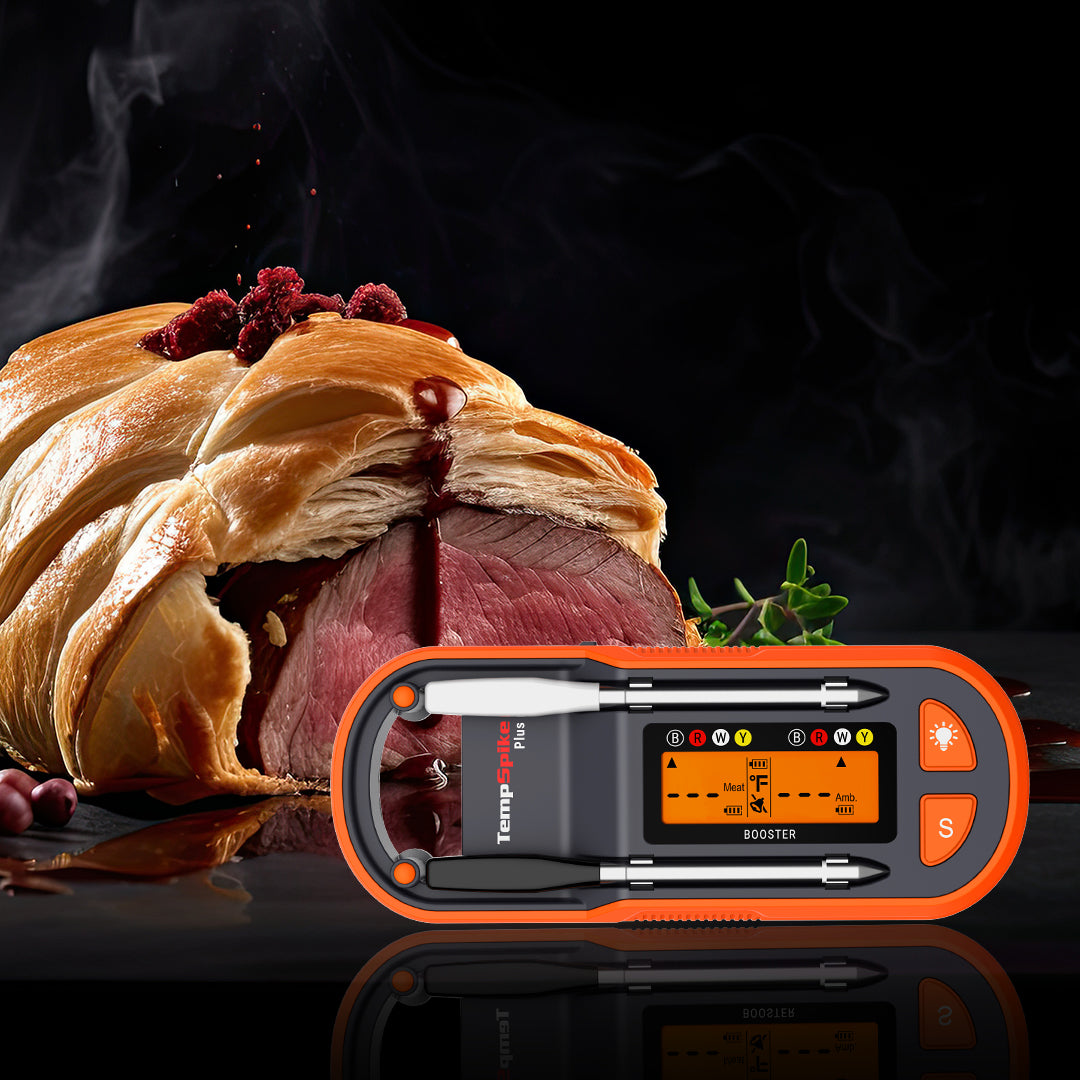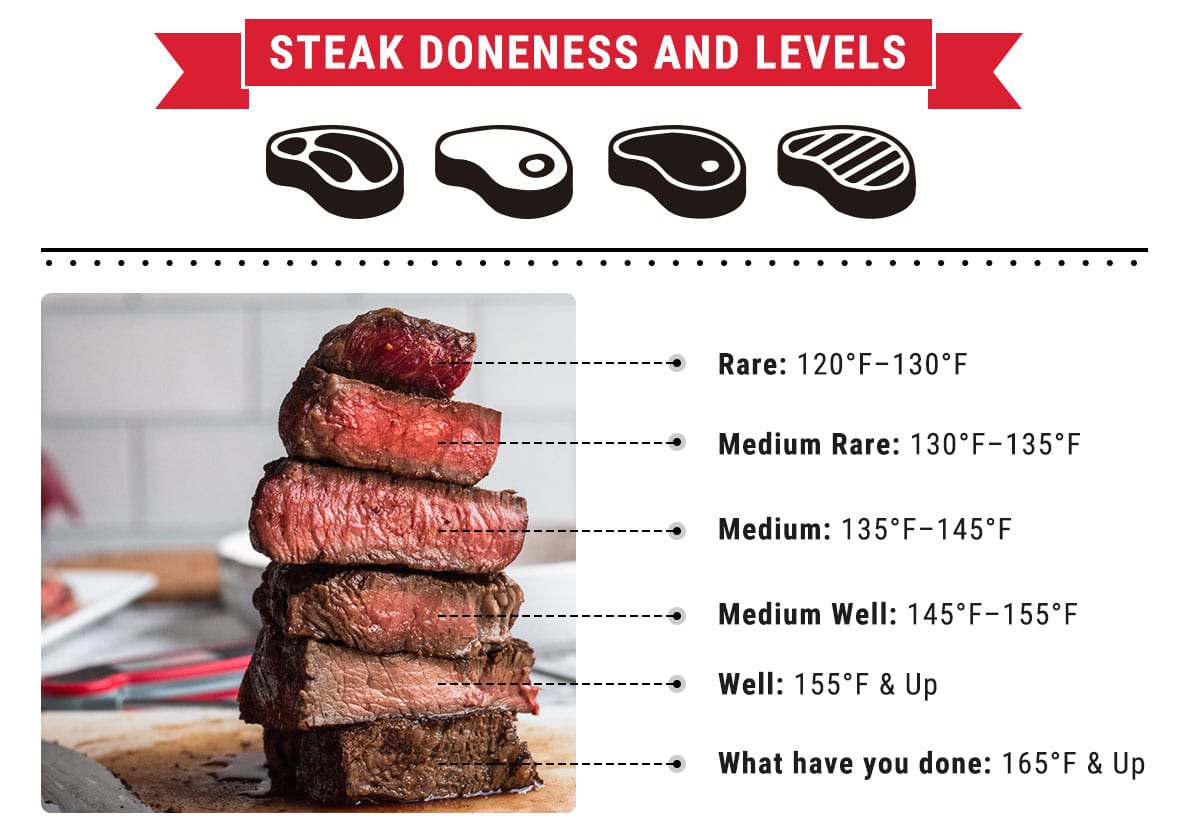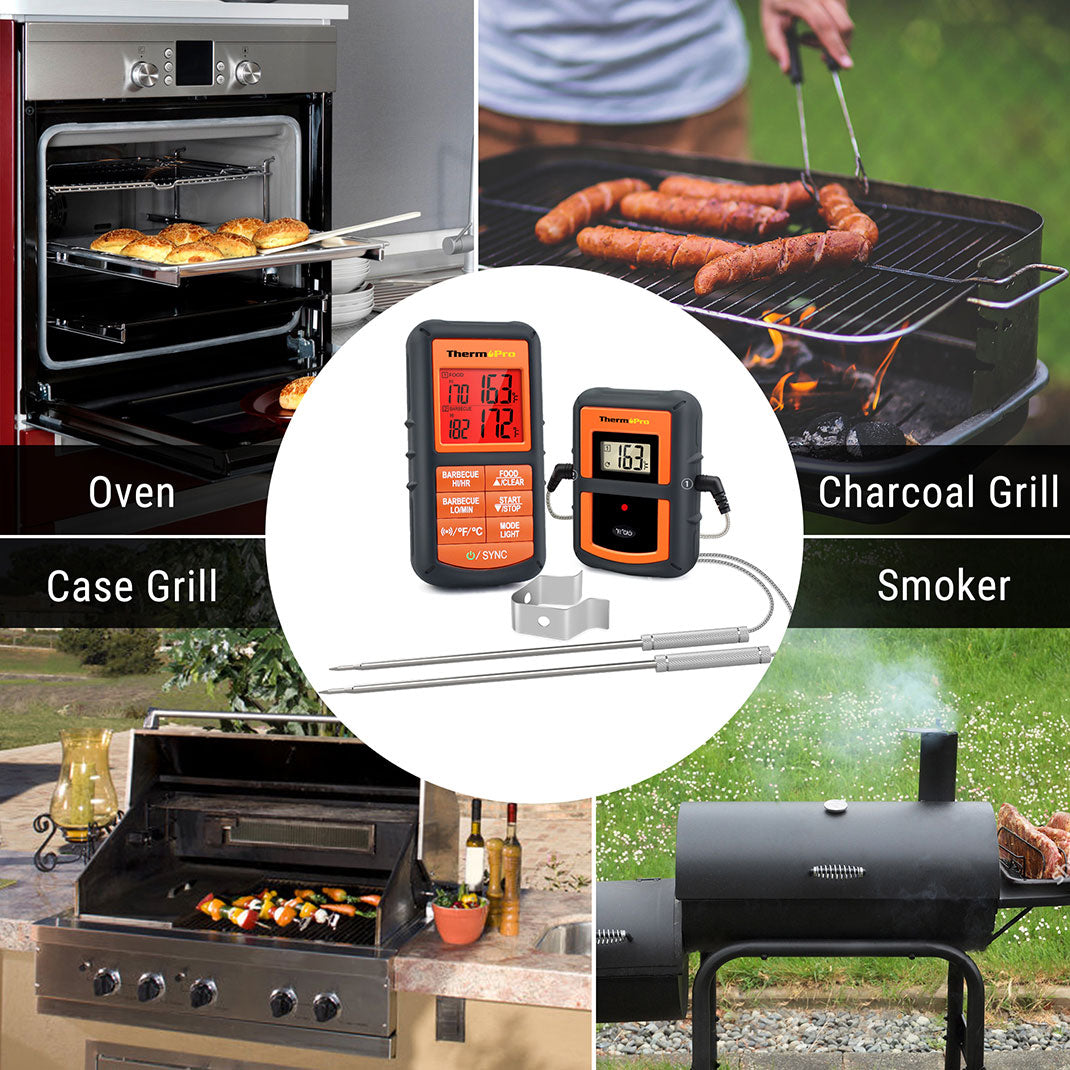Grill Temperature Full Guide






 288 Comments
288 Comments
Like with all of the other culinary arts, there is a lot that you need to keep in mind when grilling. Perhaps the most important facet of grilling is the different temperatures that you can grill at in order to evoke a variety of flavors in your meats and veggies. The problem therein is that it is not always convenient to have some sort of grill temperature chart hanging around your grilling area.
Grilling is not an art that is impossible to learn however. With enough time and practice you can easily become a master of grilling as you learn the ins and outs on various grills. Eventually, you will become the king of the block party and the chief of grilling at every summer get together you happen to attend.
Mastering the art of grilling is not that hard. The first thing that you need to learn and keep in mind is that there are six key temperatures when it comes to grilling. These six ranges will help you cook just about any dish to perfection.
There Are Six Key Temperatures of Grilling
When it comes to grilling, temperature is key. While there is no singular grill temperature gauge that everyone can trust and rely on, there are a few common techniques that will make learning the temperature ranges incredibly easy. However, there is something about cooking with a gas grill that makes food taste better when though a gas grill temperature is much harder to maintain.
To start with, you will want to focus on the general ranges of the six key grilling temperatures. These ranges are low heat, medium-low heat, medium heat, medium-high heat, high heat, and incendiary. These temperatures will easily help you cook meat to perfection and create a variety of flavors within the food. It is important to note that when it comes to grill temperature celsius is not typically used. The following temperature ranges will be presented in Fahrenheit and not in Celsius.
1. Low heat
You will typically pass through all of the lower ranges to get to the higher ones, and the first range that you reach is low heat. The low heat range is typically 225 to 250 degrees. Low heat is typically for smoking meats and true barbecue, favoring a long cooking process to keep as much of the meat flavor as possible. A few examples of things that you typically cook over low heat are brisket, ribs, pork shoulder, shoulder clod, whole pigs, lamb, and goats.
2. Medium-low heat
Medium-low heat is the second range. The temperatures for medium-low heat are typically 275 to 300 degrees. This is another range that is typically used for true barbecue as well as indirect grilling. This is typically a great range for ribs and pork shoulder, as the meat will retain more of the natural juices while still getting grilled to perfection.
3. Medium heat
The technical halfway point of the ranges, medium heat typically sits between 325 to 350 degrees. Medium heat is where you start to see a wider range of recipes pop up, and you will typically cook things like roasts, pork loin, poultry, whole fish, large dense vegetables such as cabbage, onions, or cauliflower on the particular temperature range. Medium heat is a versatile range that is great for both direct and indirect grilling as well as smoke-roasting meats. This range will often produce a well cooked batch of food that has a lot of flavor to it.
4. Medium-high heat
The fourth range of temperatures is commonly referred to as medium-high heat. This temperature range is used for a variety of grilling styles including Direct grilling, indirect grilling, smoke-roasting, plancha, and salt slab grilling. Typically, chicken pieces, planked fish, and large vegetables are all cooked at this temperature range. This range of temperatures is typically more about the technique of grilling rather than the type of food that you happen to be grilling.
5. High heat
High heat is the last temperature range that people commonly list, however it is the penultimate number on the list of six key temperatures. High heat can typically be measured in the wide range of 450 to 600 degrees. This particular temperature range is commonly used for direct grilling. This range is typically a great range for grilling foods like steak, chops, fish steaks, pizza, chicken breasts, and small or high moisture vegetables or fruit. High heat has one of the wider ranges of foods that are typically cooked at this temperature, and can easily boast a plethora of flavor in each and every dish.
6. Incendiary
Incendiary is the last of the six temperature ranges for grilling. This the highest temperature range that includes anything at 650 degrees or higher. This range is typically only used for direct grilling or infrared grilling. Incendiary is the best range for searing steaks or chops. Food cooked at this temperature can often be a little tough for some but is overall tasty.
How to Gauge Grill Temperature
A common way to gauge the temperature of a grill is to hold your hand approximately three inches above a grate and see how many seconds it takes before you can no longer stand the heat.

You should typically be able to hold your hand over a hot grill for 2 to 3 seconds, over a medium grill for 5 to 6 second, and over a low heat grill for 10 to 12 seconds. Your hand is a sure fire way to learn how hot the grill is, because you will have a first person experience with the heat that you are trying to use to cook.
However, measuring the temperature of a grill with your hand is not the safest method for obvious reasons. Thankfully, there is another option when it comes to gauging grill temperatures. After all, you probably do not want to take the chance of getting a severe burn on your hand just to find out how hot your grill is at the moment. That is what makes items like the ThermoPro Meat Thermometer a fantastic purchase.
Not only will you no longer have to hover your hand over a hot grill to figure out the temperature but you will also be able to have a more accurate reading of how hot the grill is. This means that a grill temperature thermometer is not only safer for you to use in the long run, but it is also far more accurate in readings.
How to Control Temperature on Different Grills
Different grills tend to heat at different rates and in different ways. No two grills are the same. Each time you switch grills, you will likely find that you have to learn an entirely new way to find the temperature ranges that you need to cook.
Different grills will give different flavors and require different things in order to maintain and control temperature. A propane gas grill will typically be easier to control temperature wise when compared to a charcoal or wood grill. Charcoal and wood grills will typically need fuel added to the fire in order to maintain a steady, high temperature, but will also smolder a lot easier and for a lot longer than a propane grill will.

When it comes to learning how to control temperature on different grills, it is incredibly important to remember that you are not just learning about the temperature. You are also learning all that there is to know about that specific grill that you are trying to work on.
The best way to learn how to control temperatures on different grills is to work with a grill that you are already familiar with at first and learn what the finished product is supposed to look like for each and every one of the many ranges. From there, you will surely be able to master the other types of grills armed with your knowledge and your grilling thermometer.
Get Grilling Right Away!
The easiest way to master and learn all that there is to know about grilling and grill temperatures is to just start grilling. The path to perfection is one that is lined with mistakes and learning experiences.
Learning to grill is a fun and easy skill that will bring you a lot of profit during the warmer months. Your home will surely become a gathering place as you slowly become known as a master of grilling thanks to your deep and well earned knowledge of the key grilling temperatures, and how they differ across various grill types.
The best way to learn is by doing, so get outside and get grilling whenever the weather is great. Not only will you have fun while you learn about grill temperatures, you will also have plenty of delicious food to dine on as you master the art of grilling.
Comments
You May Also Like

What Is the Most Accurate Meat Thermometer in 2024?

Meat Cooking Temperatures: Beef Temperature

How to Grill Tuna Steaks?


















